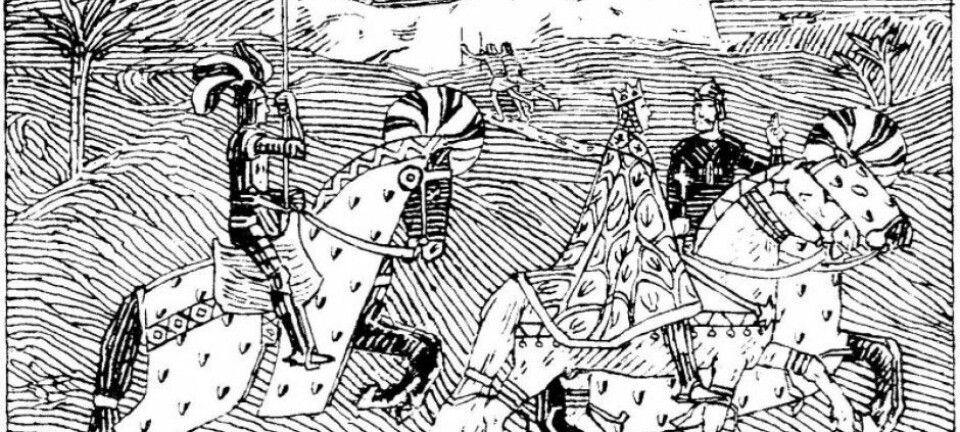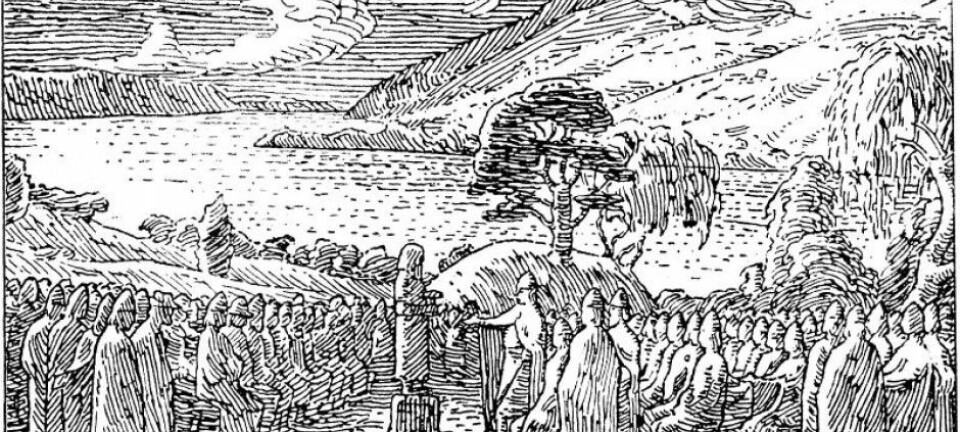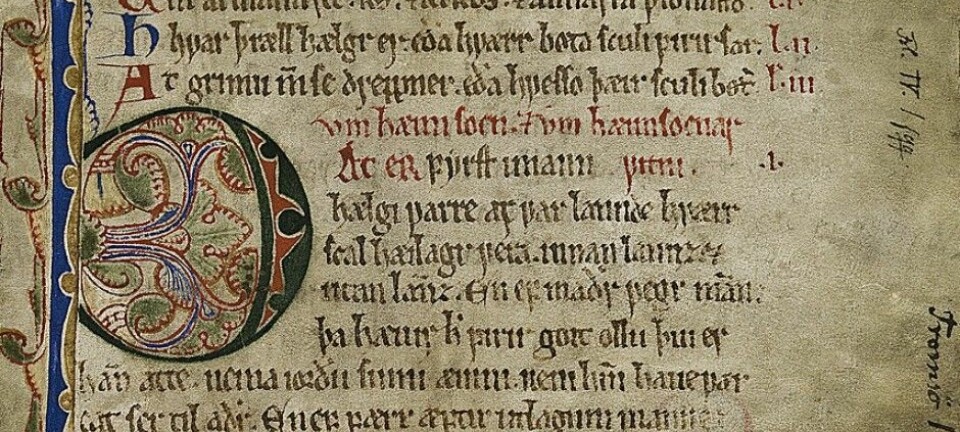
Why is the full story of the Viking Age and High Middle Ages emerging only now?
Written in the 1380s in Iceland, the Flateyarbók chronicling Norwegian history never made it to Norway. Some 600 years later a Norwegian king has finally received the book, in Norwegian. An English translation is also on the way.
The Viking Age and the High Middle Ages were Norway's heyday – until a dramatic decline and the Black Death in the mid-1300s ended it all.
By the end of the 1380s, the writing of Flateyarbók in Iceland was complete.
Perhaps this new and comprehensive history book about Norway was a rich Icelandic farmer's attempt to give a young Norwegian king the knowledge and confidence to rebuild the mighty Norwegian Realm. The Old Kingdom of Norway had stretched from the Orkney Islands to the Faroe Islands, Iceland and Greenland.
The young Norwegian king could learn a lot from this book, along with reading about passion, sword fighting and sea battles. And he could memorise good speeches his ancestors had recited.
Three times longer than Snorre’s work
The historical writing in Flateyarbók spans the period from when Harald Fairhair was Norway's first king in the early 900s and almost until the Black Death struck Norway around the year 1350.
But 17-year-old King Olav IV Haakonsson never received the book. The boy died in what many believed to be a mysterious manner.
Now the entire book has finally been translated and published in Norwegian by a small publishing house in Stavanger.
Flateyjarbók (its Icelandic name) is three times as extensive as Snorre Sturlason's collection of sagas about Swedish and Norwegian kings, Heimskringla.
Today the beautiful handwritten original is stored in Reykjavik in Iceland. Not one of the 225 well-preserved calfskin leaves (parchment) is missing. Everything is still legible.
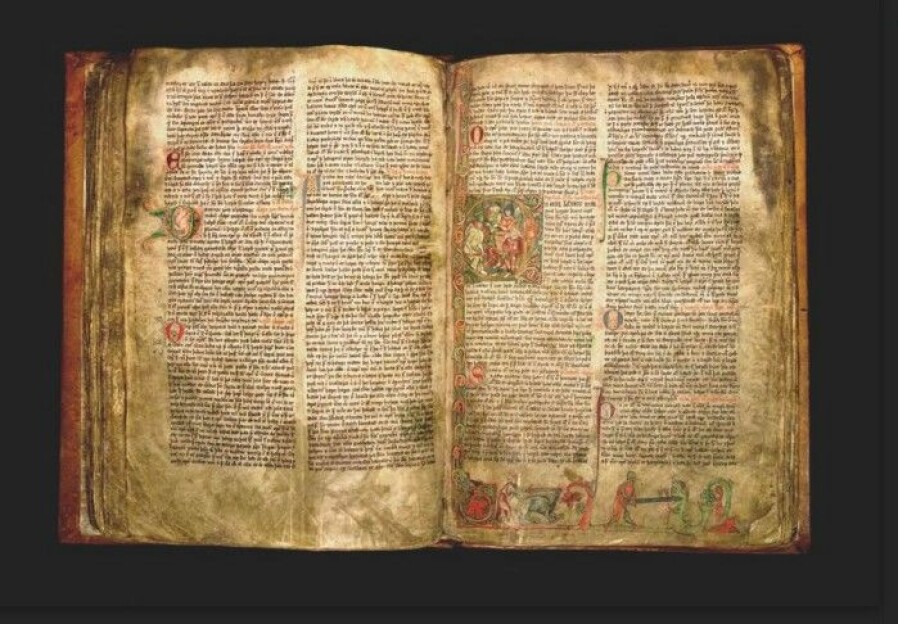
Manuscript has been contentious

Torgrim Titlestad, a history professor at the University of Stavanger, has been central to the publication of the seven Norwegian volumes of the Flateyarbók manuscript.
Both Snorre and Flateyarbók have been controversial sources of Norwegian history among historians. But Titlestad has distinguished himself as a spokesperson for regarding the sagas as credible sources of Norway's history in the Viking Age and High Middle Ages.
“Flateyarbók is Norway's first complete history of this period,” Titlestad told NRK, the Norwegian Broadcasting Corporation.
Titlestad believes we should take the Flateyarbók manuscript seriously. But the professor is of course also open to questioning the credibility of parts of the Flateyarbók contents, as should also be done with Snorre's sagas. Both books are written well after – up to several hundred years – the events were said to have occurred.
“This book may not be the most accurate version of Norway's history,” says Titlestad.
But, he points out, the individuals who wrote the book in a monastery in northern Iceland 600 years ago had access to a lot of background knowledge about Norway's history.
Do we come from Odin or Nór?
Snorre's Heimskringla and Flateyarbók have numerous differences.
In Snorre we read that the Norwegians and their gods probably originated in Asia, with the pagan god Odin.

Flateyarbók, on the other hand, tells us that the Norwegians’ progenitor is Nór and comes from the icy north.
The main part of the book was written by the two priests Jon Tordsson and Magnus Torhallsson in the 1380s. They expanded on existing writings from several eras.
The patron farmer in northern Iceland who commissioned the two scribes to undertake the project was Jon Håkonsson. He was a man who, like numerous Icelanders, may have regarded the King of Norway as the unifying leader of all who considered themselves part of the great Norwegian Realm.
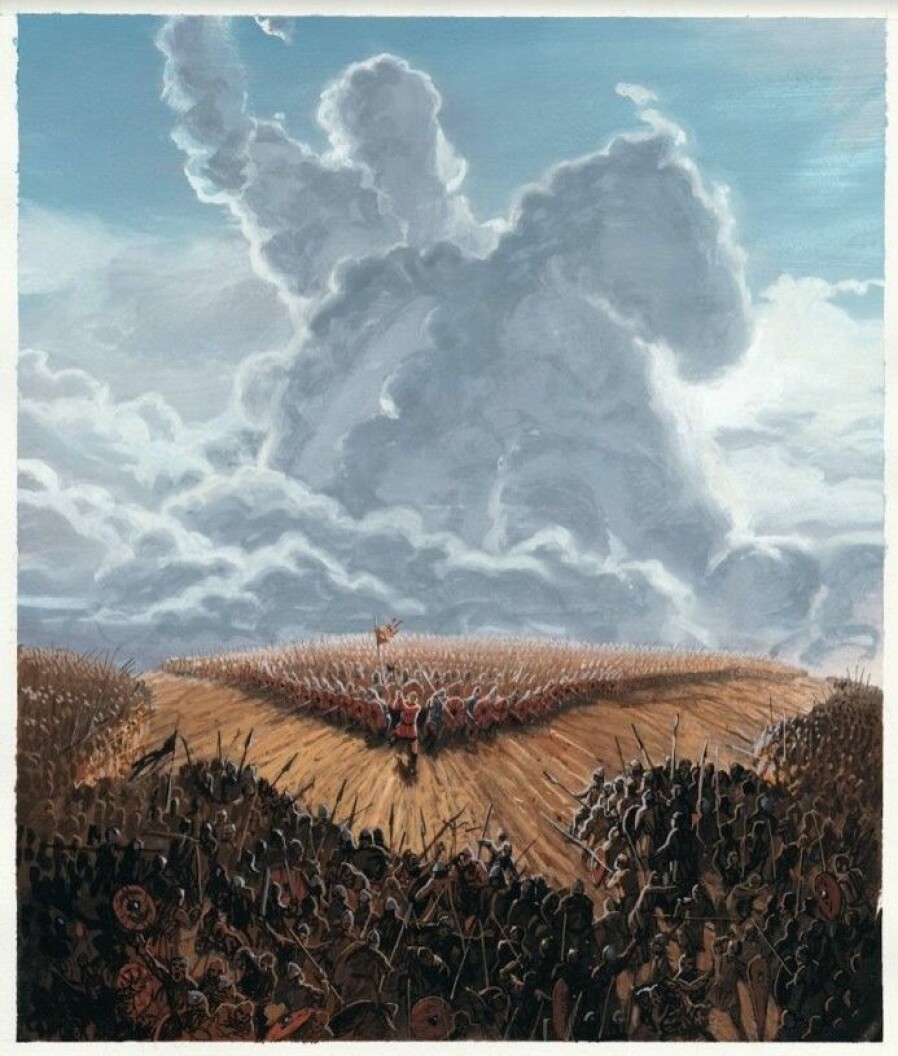
Never came to Norway
Perhaps Håkonsson's plan was for the book to help the new Norwegian king lift Iceland and Norway out of the backwater where they had ended up in the aftermath of the Black Death.
Or possibly the rich farmer in northern Iceland thought that the stories of powerful past Norwegian kings and their subjects would give the new Norwegian monarch political and ideological power to move the kingdom forward again and rebuild the Norwegian Realm.
But when Olav suddenly dies at just 17 years old, the intended addressee for the gift from Iceland is gone. Instead, Norway slides into the union with Denmark.
Flateyarbók is never sent to Norway.
Instead, it is stored on Flatey, an island off the west coast of Iceland. Then the beautiful book is picked up under pressure in the 17th century and brought to the Royal Museum in Copenhagen.
From there it finally returns to Iceland in 1971 after much hemming and hawing by the Danes.
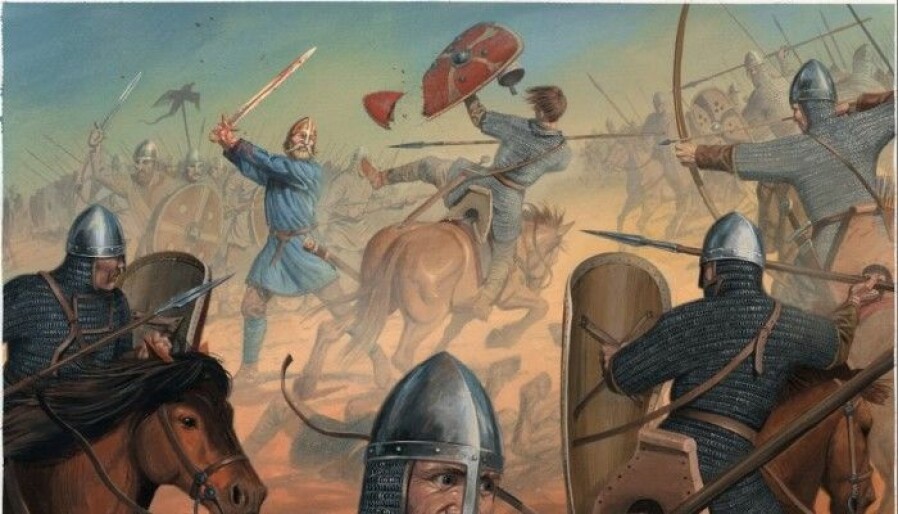
20 000 copies so far
Completing the Norwegian edition of Flateyarbók has taken a total of 8 years and cost NOK 15 million.
The release of the last two volumes completes the largest saga dissemination project in Norway in modern times.
The project has involved many – from Iceland’s Althing (parliament) to the Queen of Denmark and the Lagting (parliament) in the Faroe Islands – under the auspices of the small Norwegian publishing house Saga Bok and its private foundations and institutions.
So far, Flateyarbók has sold a total of 20 000 copies since the first volume came out in 2014.
The publisher is now translating Flateyarbók into English. The book is also being used in a virtual reality presentation at Viking House in Stavanger, which opened earlier this year. Several other projects are planned.
———








